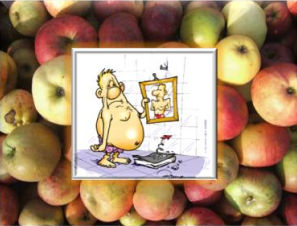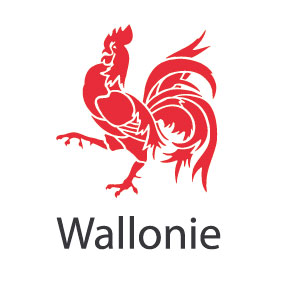Context
On a world-wide scale, population presenting overweight is increasing since many years. Changes in the diet of population touched by this problem remain inconspicuous (for example: consumption of fruits and vegetables increase not much) but, surprisingly, the demand of nutriment allowing the prevention of overweight problems increases. In addition, the development of more and more strict regulations on products responding to nutritional and/or health claims demonstrates that the market will be more oriented on scientifically proven solutions in the future.
Objectives
The aim of the project is included within the framework of the fight against obesity, considered by the OMS as a world-wide disease affecting all age groups. The obesity would be essentially due to a new lifestyle combining a lack of physical exercises and an inadequate diet. On the other hand, consumers, more and more exigent on the quality of products, try to combine the quality of the nutriment with their health to have the benefits of the products without any dietary change. The project intends to associate natural products, among which apple extracts, in one (or two) synergetic formulations and to evaluate their actions on the weight control in vitro & in vivo (preclinical trial). Indeed, on one hand, some natural compounds allow a good bioavailability of important elements of intestinal transit which has an effect on the weight control. On a second hand, apple extracts, rich in fibers and phenolic compounds, reduce sugar absorption and protect lipids against oxidation. The project also aims to valorize the agro-industrial by-products of the apple industry (peel, pulp and marc).
Expected results
The main result of the project is the conception of a natural ingredient presenting the characteristics required to obtain a claim associated with weight control. Overweight and obesity are actual problems of public health and concern all age groups, including children and teenagers. They also concern all socio-professional groups. The project-made nutriment could interest a large range of the population (teenagers, adults, seniors) in responding to the following health problems: weight control, bone growth, cardiovascular diseases prevention, osteoporosis prevention, protection against intestinal inflammation.
Contribution
The CRA-W will be responsible with the cider factory STASSEN for providing the raw materials (peel, pulp and marc of apple) of the project. After accordance with the industrial partners STIERNON and CELABOR, CRA-W will provide the samples required for their tasks. Then spectroscopic analyses (UV, RAMAN, Near and Mid-Infrared) of both raw materials and phenolic extracts obtained from STIERNON will be realized by CRA-W. The aim of this step is the analysis of raw materials of the project by rapid and non-destructive methods. Data will be analyzed with various regression methods: Multiple Linear Regression (MLR), Partial Least Square (PLS), Support Vector Machine (SVM). Calibration models will be developed for the prediction of the quality of the product. The best performing regression method will be validated and used in the project. Finally, at the industrial scale-up level, CRA-W will focus on the development of a rapid and non-destructive analysis system. The infrared spectroscopy will be used to determine parameters related to the composition and quality of the product. The most appropriate apparatus and the best configuration will be chosen. Comparison between reference and predicted values will allow validating calibration models. The CRA-W will also be responsible for the selection of 50 apple varieties, coming from the collections or from the breeding program, which are suitable for the aims of the project. The purpose is to be able to provide apple varieties potentially rich in phenolic compounds, presenting a high nutritional quality, few susceptible to diseases and possessing good agronomic characteristics. The varieties will be analyzed by infrared spectroscopy and using reference methods, which will allow the extension of the database developed in the framework of the POMINNO project.
Partners
Eight partners are involved in the project CAPPLE: - 4 industrials partners (Galactic SA - coordinator of the project, Stiernon SA, Stassen SA, and Celabor SCRL), - 3 academic units (LDRI of UCLouvain, ISV of UCLouvain, and CREDEC of ULg), - a public research center (CRA-W, Walloon Agricultural Research Centre; Food and Feed Quality Unit and Breeding and Biodiversity Unit).
CRAW off coordinator
Galactic SAFunding
- Marshall Plan of the Walloon Region







